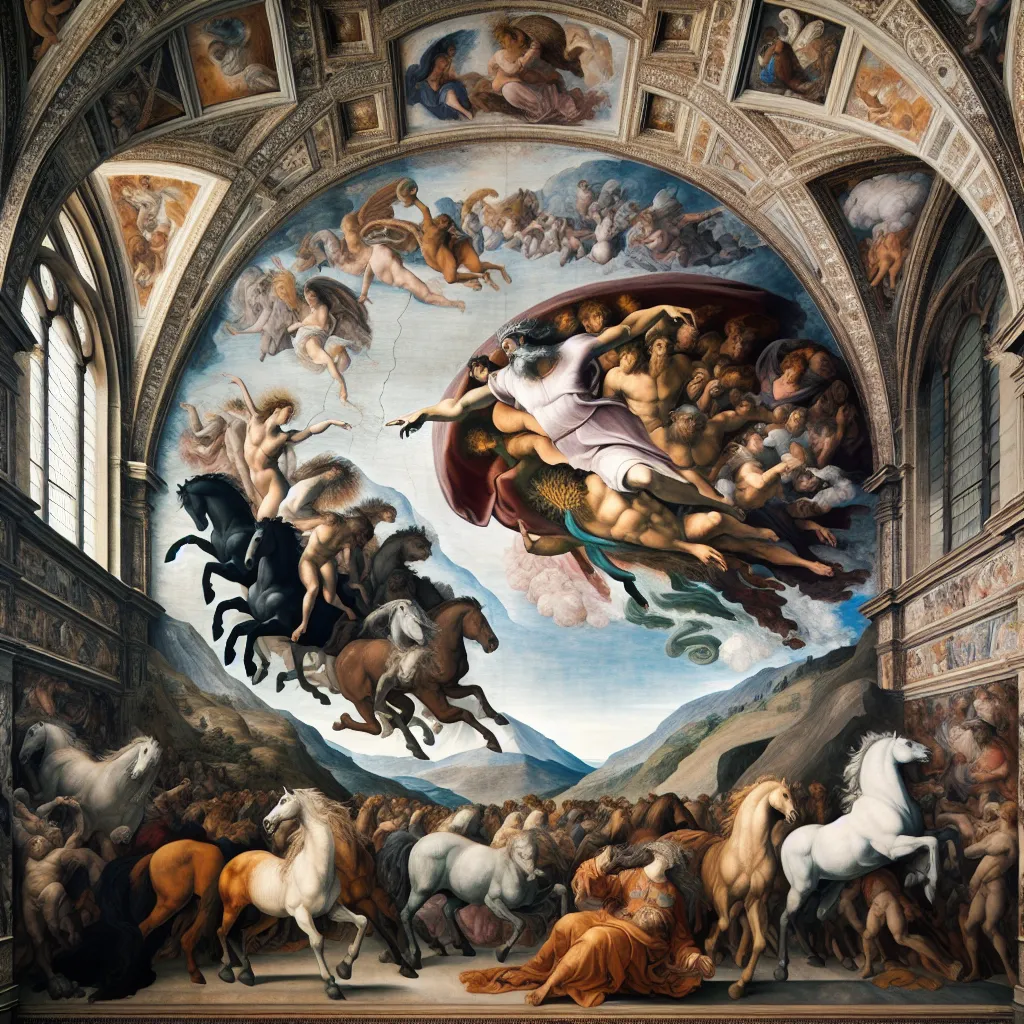
- Published on
- Authors

- Name
- You
The Dualistic Nature of Gnosticism
Introduction
Imagine a realm where science and mysticism dance in a beautiful cosmic duet; where the ancient whispers of Gnostic wisdom align harmoniously with the modern revelations of quantum mechanics. Welcome to the dualistic worldview of Gnosticism, a mystical philosophy that paints a clear contrast between spirit and matter, light and darkness, knowledge and ignorance.
The Essence of Gnosticism
What is Dualism?
At its heart, Gnosticism is deeply rooted in dualism—the belief that reality comprises two fundamental and opposing principles. In Gnostic thought, these principles manifest as:
- Spirit (Pneuma): Eternal, pure, and divine, the spirit is often seen as a shard of the divine essence, trapped in the material world yet yearning for liberation.
- Matter (Hyle): Temporal, impure, and deceptive, matter is typically viewed as a creation of a lesser deity (the Demiurge), confining the spirit and obscuring true knowledge.
This dualistic framework is succinctly summarized in the table below:
| Aspect | Spirit (Pneuma) | Matter (Hyle) |
|---|---|---|
| Nature | Eternal, Divine | Temporal, Impure |
| Perception | Light, Knowledge | Darkness, Ignorance |
| Purpose | Liberation | Confinement |
| Creator | The True God | The Demiurge |
Quantum Mechanics and Gnostic Dualism
In the realm of quantum mechanics, we find fascinating parallels to Gnostic dualism. Consider the dual nature of light, which behaves both as a particle and a wave, existing in a state of superposition until observed. This duality reflects the Gnostic idea of spirit existing within the confines of matter, waiting to be ‘observed’ or realized through gnosis (divine knowledge).
Implications for Spiritual Practice
The Path of Gnosis
Gnosticism emphasizes personal spiritual knowledge (gnosis) over blind faith. This pursuit of gnosis is akin to a quantum leap—a transformative realization that shifts one's perception from material ignorance to spiritual enlightenment.
Key practices in the Gnostic spiritual path include:
Meditative Reflection:
- Delve into the depths of your consciousness, seeking to transcend the illusions of the material world.
Inner Light Visualization:
- Envision your inner light growing, symbolizing the awakening spirit breaking free from material confines.
Esoteric Study:
- Study sacred texts and mystical traditions to unlock hidden wisdom and deepen your understanding of the universe.
Conclusion
The dualistic worldview of Gnosticism, interwoven with the mysteries of quantum mechanics, provides a profound framework for spiritual exploration. By recognizing the distinct realms of spirit and matter, and harnessing the transformative power of gnosis, we embark on a journey towards ultimate liberation and enlightenment.
In the mosaic of existence, science and mysticism are not adversaries but partners in the grand symphony of understanding. As we continue to explore these ancient wisdoms with the tools of modern science, we move ever closer to the light of truth, where spirit and matter dance in perfect harmony.
Further Reading
- Books: "The Gnostic Gospels" by Elaine Pagels, "Quantum Enigma" by Bruce Rosenblum and Fred Kuttner
- Articles: Gnosticism and Science , Quantum Mysticism
Share Your Thoughts
Join the conversation! How do you perceive the relationship between science and spirituality? Drop your comments below and share your insights.
May your journey be illuminated by the light of gnosis and the wisdom of the ancients. 🌟
